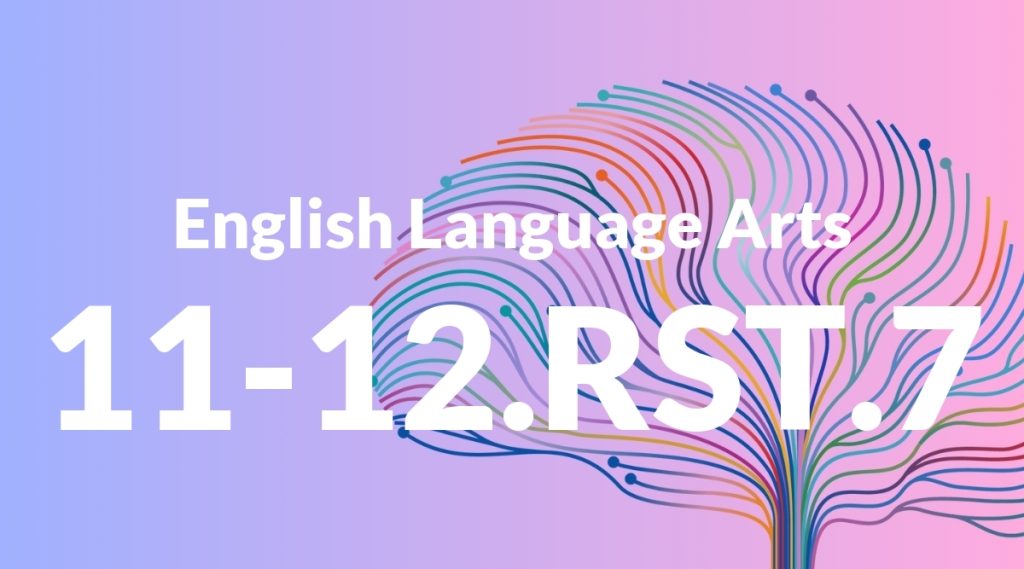Standard: 11-12.RST.7 – Integrate and evaluate multiple sources of information presented in diverse formats and media (e.g., quantitative data, video, multimedia) in order to address a question or solve a problem.
Grade level: Grade 11-12
Subject: English Language Arts
Domain: Science & Technical Subjects
Teacher Overview
This standard emphasizes the importance of integrating and evaluating information from diverse sources to solve problems or answer questions. It is crucial for developing critical thinking and research skills, which are essential for success in both academic and real-world contexts. Students should be comfortable with analyzing individual sources, identifying main ideas and supporting details, and evaluating the credibility of sources.
Students will develop the ability to synthesize information from various sources, creating well-rounded arguments or solutions. They will also learn to present their findings coherently and persuasively.
Common Misconception 1
Some students might think that all sources of information are equally credible, which is incorrect because sources vary in reliability and bias. Evaluating the credibility of sources is essential for accurate and trustworthy conclusions.
Intervention 1
Implement lessons that teach students how to assess the credibility of sources by looking at the author’s background, the publication date, and the source’s purpose. Use examples of both credible and non-credible sources for practice.
Common Misconception 2
Another common misconception is that integrating information from multiple sources means simply combining them without analysis. This is incorrect as it is essential to critically analyze and compare information to draw meaningful conclusions.
Intervention 2
Encourage students to critically evaluate and compare information from multiple sources. Use activities that require them to identify consistencies and discrepancies and discuss their implications.
Prerequisite Knowledge
Students should have a foundational understanding of how to critically analyze individual sources of information, including identifying main ideas, supporting details, and evaluating the credibility of sources.
Subsequent Knowledge
After mastering this standard, students will be able to synthesize information from various sources to create well-rounded arguments or solutions. They will also develop skills in presenting their findings in a coherent and persuasive manner.
Instructional Activities
- Group projects analyzing multiple sources on a specific topic and presenting findings.
- Debates where students must use information from various sources to support their arguments.
- Research assignments requiring students to integrate quantitative data, videos, and articles.




